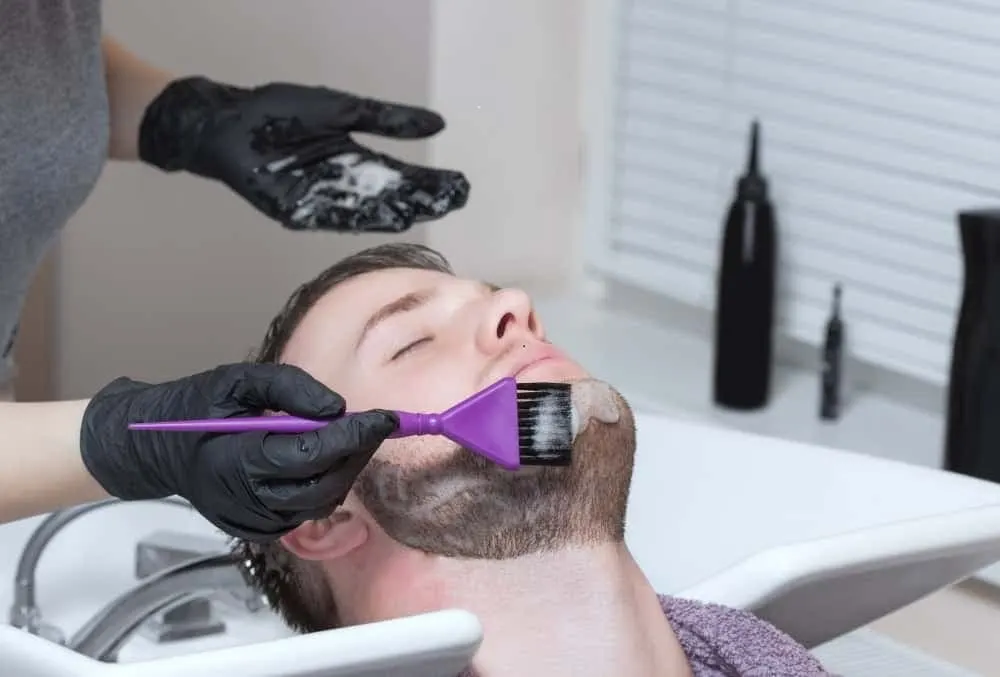Does Beard Dye Stain Skin?
A beard dye can make you look decades younger or help you create a look that matches your unique personality. The only downside? Applying beard dye can stain your skin. How bad does beard dye stain skin? It depends on the color and skin type, but beard dye can take weeks to fade.
Fortunately, you can do a few things to prevent beard dye from staining your skin and different methods for removing beard dye from your skin.
Does Beard Dye Stain Your Skin?
Yes. It’s challenging to apply beard dye without getting some on your skin. Because men often use darker dyes to hide gray or white facial hair, dye stains can become very noticeable.
The good news is that skin cells regenerate at a faster pace compared to hair. It means that the pigment will naturally fade within a few weeks if you don’t do anything.
Best Way to Apply Beard Dye Without Staining Skin

Applying any product to dry skin means that your skin will absorb more of the product. It’s true for skincare products and beard dyes.
When dying your beard, your first step should be to moisturize your skin. With proper hydration, your skin cells will absorb less of the pigment. You can go further by using a product like petroleum jelly or baby oil to create a protective barrier around your facial hair.
A thick layer of oil or cream will prevent direct contact between the beard dye and your skin. Be careful not to get petroleum jelly in your facial hair since it would prevent a uniform application of the beard dye.
Here are a few tips for applying beard dye without getting any on your skin:
- Take your time when applying the beard dye and use a small applicator.
- Wear gloves and avoid touching other parts of your face while applying the dye.
- Apply a small quantity of dye at once.
- Keep a damp towel nearby and immediately wipe any dye that gets on your skin.
- Make sure you wait long enough before rinsing since the dye could run and stain your skin if you didn’t let it set properly.
- When it’s time to rinse your beard, do it carefully and avoid rubbing your face with a towel to prevent smearing the dye.
How to Remove Beard Dye From Your Skin
Let’s face it. You’re probably going to get some pigments on your skin if it’s your first time dyeing your beard. Even though you can wait for the pigments to fade on their own, there are a few things you can do to remove dye from your skin:
- Soap and warm water can work if you wash your skin immediately after the dyeing process.
- Dish soap might do the trick. Dish soaps contain cleaning agents that can break down grease, but these cleaning agents can also remove the dye.
- If you can still see a stain on your skin, mix a few drops of dish soap with baking soda to create an exfoliating paste.
- Cleansing your face with oil is a popular beauty trend, but it can also help lift pigments from your skin. Oil will get into your pores and dissolve dead skin cells, sebum, and dye residues. You can use olive oil, essential oils, or skincare product for oil cleansing.
- You can achieve similar results with petroleum jelly and other heavy moisturizers. If the pigments haven’t had a lot of time to set, these products might be sufficient for lifting the dye from your skin.
- Applying toothpaste is a trick worth trying. Toothpaste contains mildly abrasive ingredients for making your teeth whiter. Try rubbing your skin gently with some teeth-whitening toothpaste to see if you can remove the dye.
- You can use harsher methods like rubbing alcohol to dissolve the pigments from your beard dye. Keep in mind that this method will probably irritate your skin. Make sure to apply some moisturizer afterward.
Watch the following video to know how to get rid of beard dye from your skin.
Conclusion
Does beard dye stain skin? Yes, but it’s possible to prevent staining by applying beard dye carefully and protecting your skin with a thick layer of petroleum jelly, baby oil, or heavy moisturizer. If you get some dye on your skin, you can use a few methods to lift the pigments, but it’s best to act fast to prevent the dye from setting.






